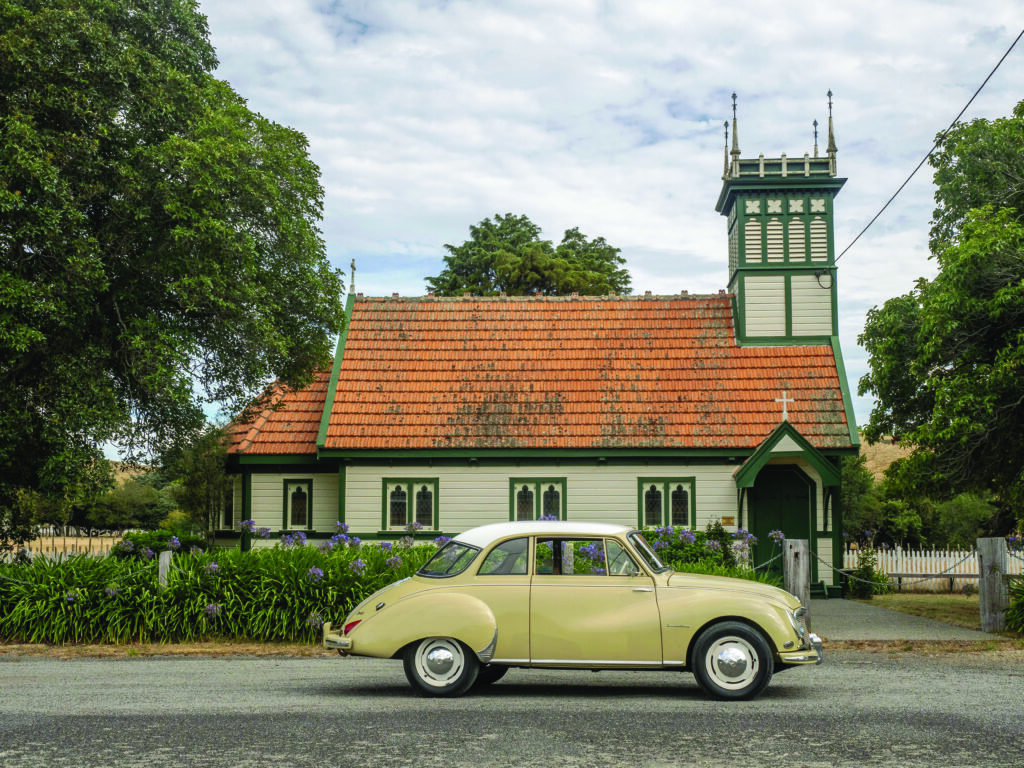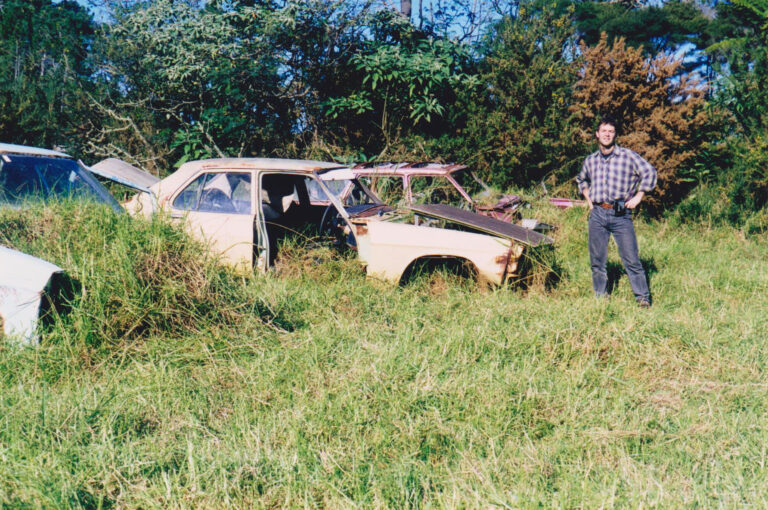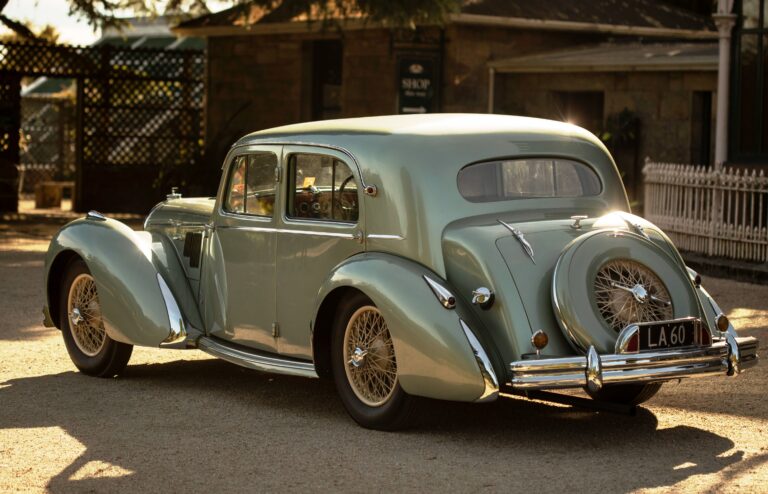1957 AUTO UNION DKW
By Quinton Taylor, photography Pete Nikolaison
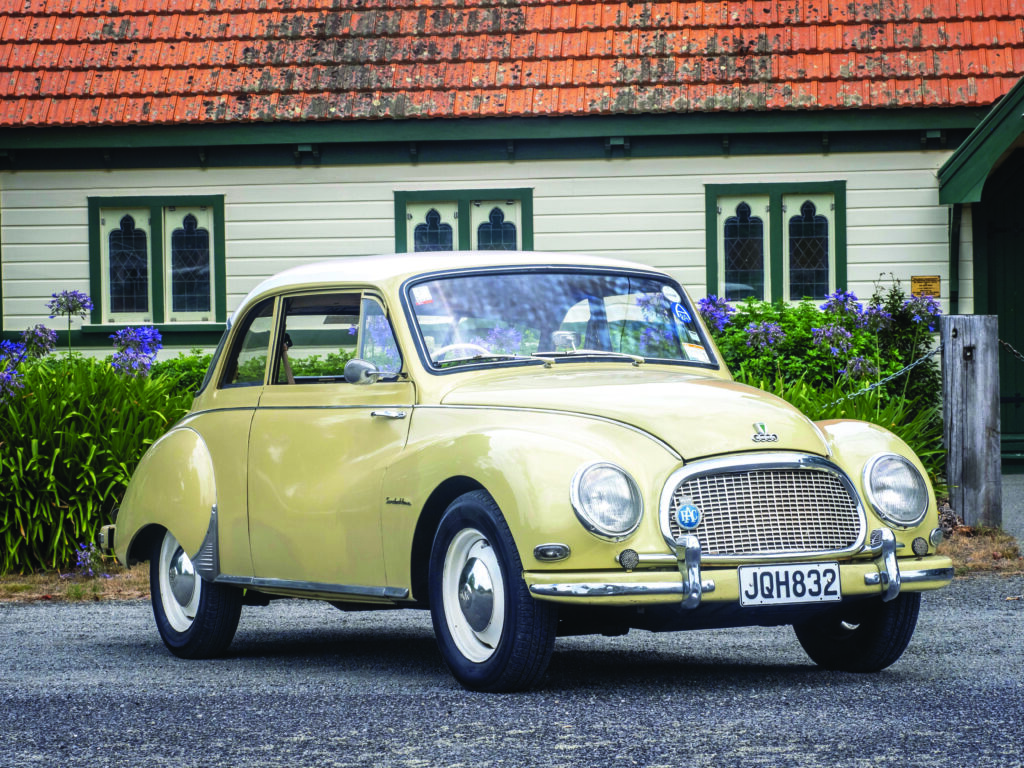
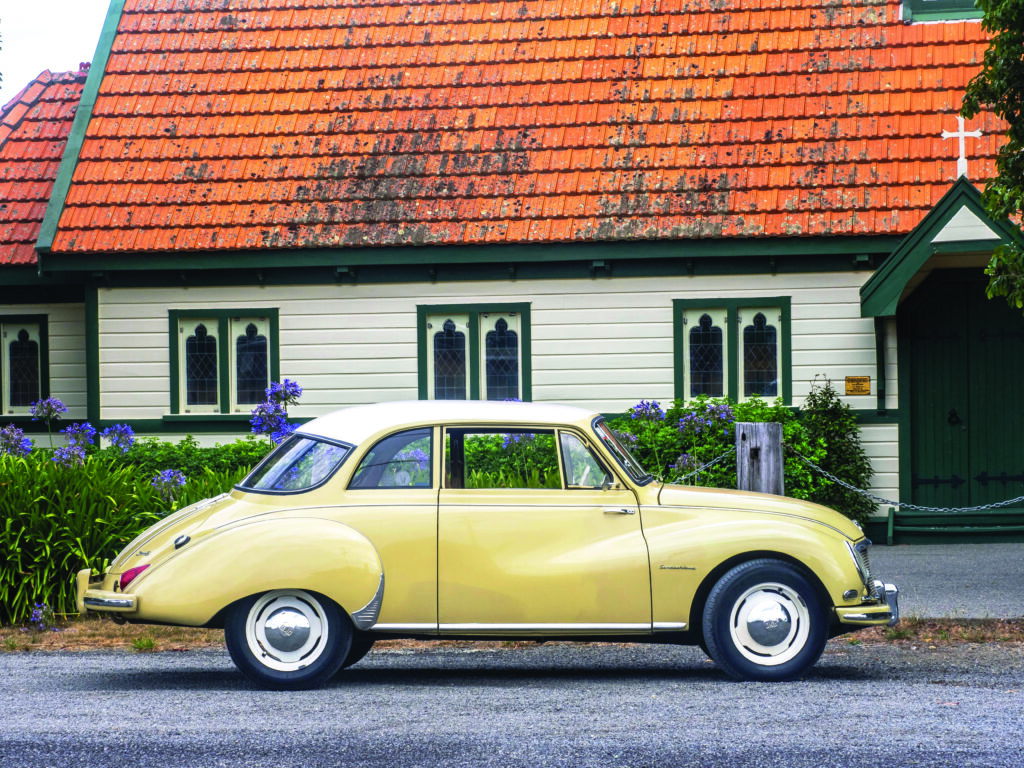
Provenance is a valuable part of a classic car and DKW/Auto Union collectors Brendan and Bobbette Odell have a detailed documented history of a special car in their growing collection of these little two-stroke wonders.
Brendan’s hometown of Pretoria enjoyed more than its fair share of the marque, where their reliability and performance made them popular..
“There used to be a joke going round in South Africa that there were more DKWs in Pretoria per square mile than anywhere else in the world,” Says Brendan.
The Odells redressed that balance a little when they shifted to New Zealand as they brought some of the cars with them.
One of their DKWs also accompanied them to Tonga. Brendan’s green 1959 Auto Union 1000 two-door went with them from South Africa to Tonga from 2010 to 2013 where he worked for the local airline. It then travelled on with them to New Zealand. It is one of just 10 right-hand drive cars of the two-door basic model remaining worldwide.
However, in 2017, some years after arriving in New Zealand, they swapped it for a 1960 Auto Union 1000S four-door saloon — the red car in the pics — with Ilan Paz, in Whangarei. He is now just the third owner of the car.
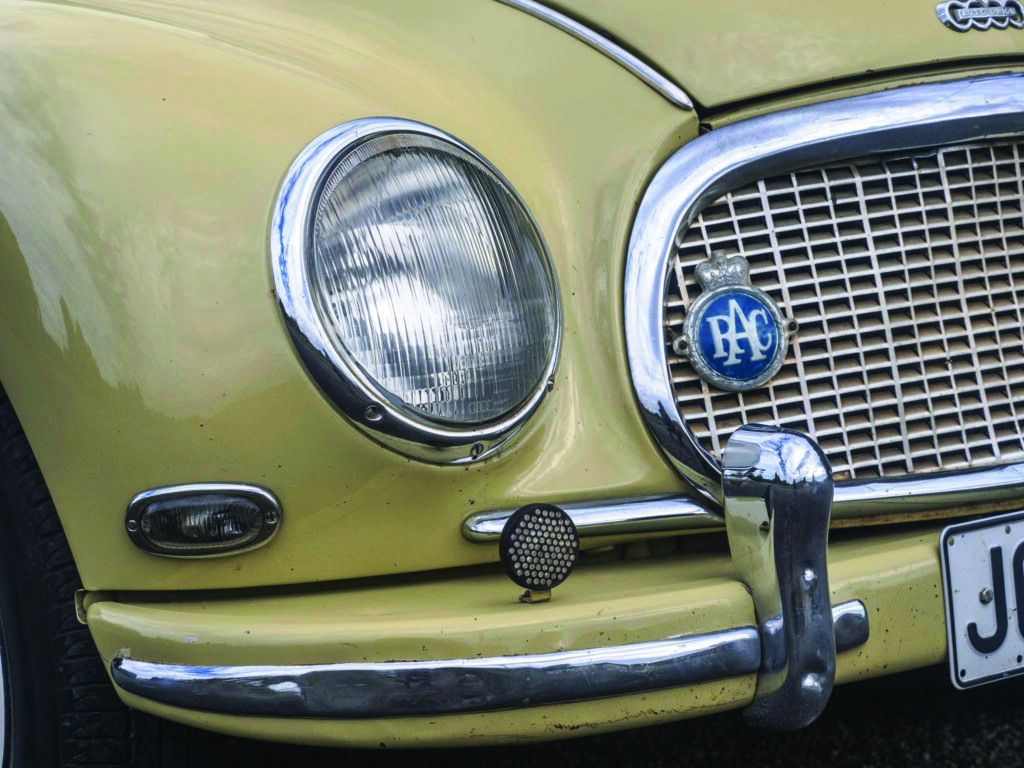
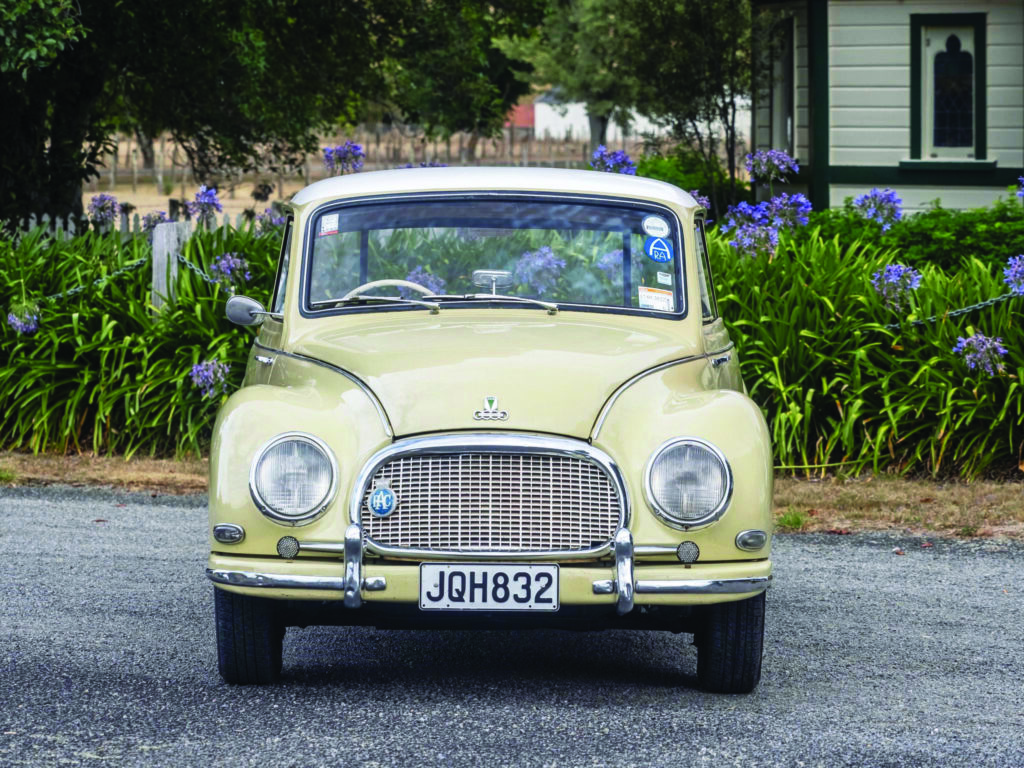
The South African Connection
Klaus-Detlev von Oertzen, Auto Union sales director (formerly with Wanderer), became concerned about the growing Nazi influence in Germany and, having Jewish connections, he decided to relocate to South Africa. He organised the export of DKW cars to South Africa beginning in 1936. The F5 and 7 models made a big impression locally, helped by a successful motor racing campaign and, earning a reputation for reliability and good fuel economy in the expanses of South Africa, the cars sold well. Following the Second World War, Pretoria dealer Jacob Bros initiated imports in 1953. Bros campaigned his own DKW in rallies, such as the car-destroying East African Safari Rally in Kenya in the mid-1950s. Known as the toughest rally in the World, a DKW F93 won the 1956 East African Safari Rally.

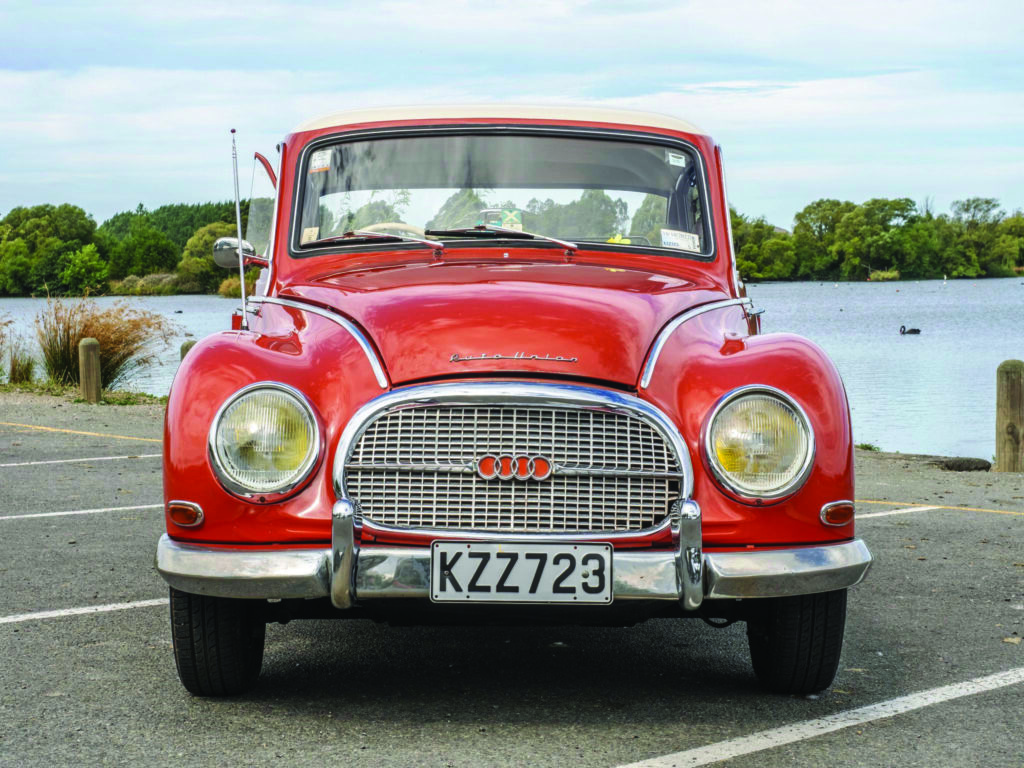
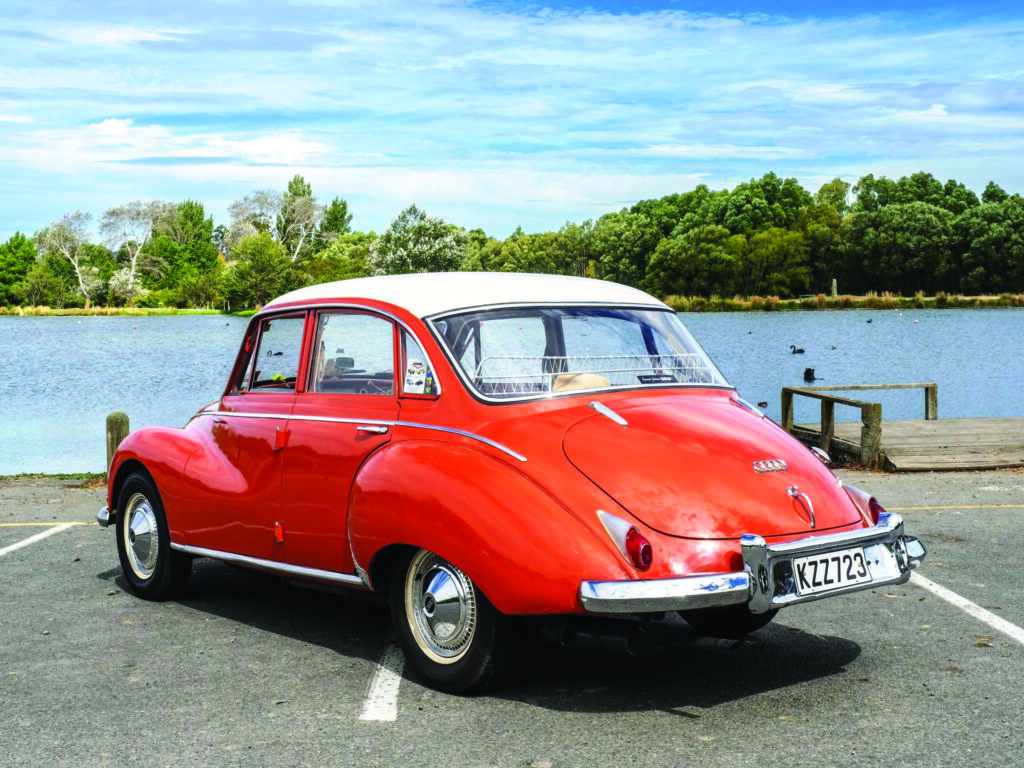
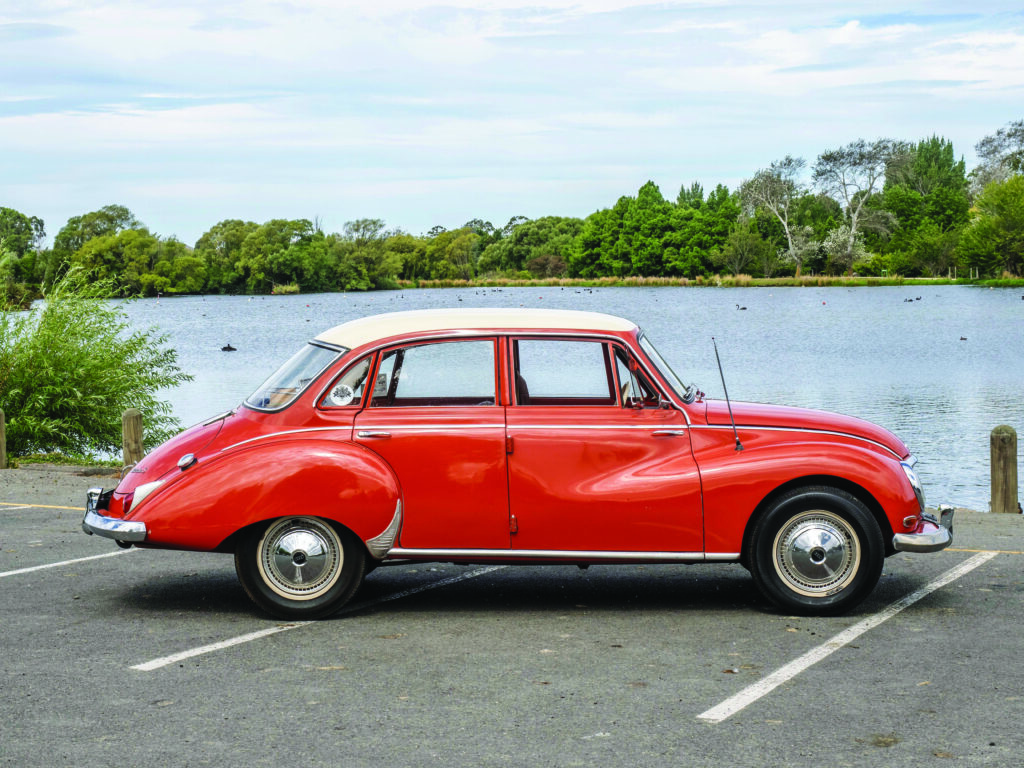
More Deeks
Aircraft engineer Brendan also restored vintage aircraft in South Africa. Now based in Masterton, he maintains a strong interest in aviation, as well as being a keen member of a group of collectors of the DKW/Auto Union cars in New Zealand and overseas.
Adding to his collection, he recently purchased a military DKW/Auto Union Munga, a Jeep-styled vehicle, from fellow collector John Farmer at Whitianga. John is the owner of a very rare 1000 SP two-door convertible that featured in New Zealand Classic Car feature in 2019. Brendan now has the Munga running and it will be a great talking point at shows, once completed.
This is all just a preamble — the really special car in the collection is a 1957 DKW Sonderklasse (Special Class) 3=6 F93 model purchased from Thomas (Tom) Bower, in Pretoria around 2000, after Brendan saw the car at a classic car meeting.
The next year it became the Odels wedding car when Brendan and Bobbette married, and it carried them on their honeymoon without drama. The little car now has 194,000 miles (312,000km) recorded yet performed faultlessly on this year’s Vero International Festival of Historic Motoring Rally, held in New Plymouth. It is often taken on various parades and car club runs throughout the central North Island. The engine is still the original unit, which still has a standard bore and has had only one replacement; a new roller-bearing crankshaft at 80,000mls.
“From leaving home to returning home, we did just over 1000 happy miles (1600km). “We smashed a few bugs on the way. The ‘Deek’ didn’t miss a beat, lugging everything a family of five needs to carry, and a family of five,” says Brendan. He added his thanks to all responsible at the VCC [Vintage Car Club] for “a wonderful event”.
The Deek, as Brendan refers to it, has an unimpeachable provenance. He first saw the car in Pretoria in 2000 at a car rally and made attempts to contact the owner through a local magazine.
It pays to advertise. Brendan received a phone call on the day the magazine was on the newsstands. The tale of its travels with its now elderly owner proved to be remarkable one, given it started in 1957, when Europe was still rebuilding from the devastation of the Second World War. It’s also testament to the strength of this little car which survives in great condition today.
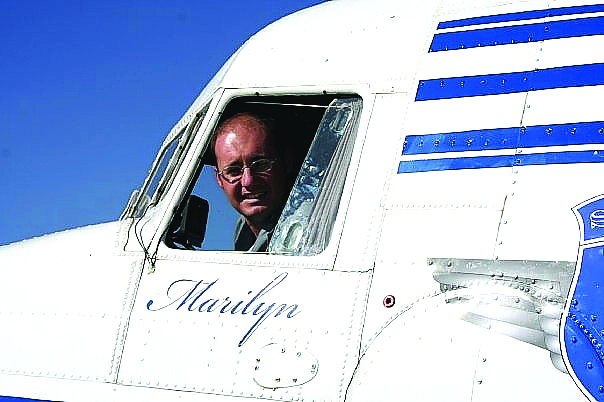
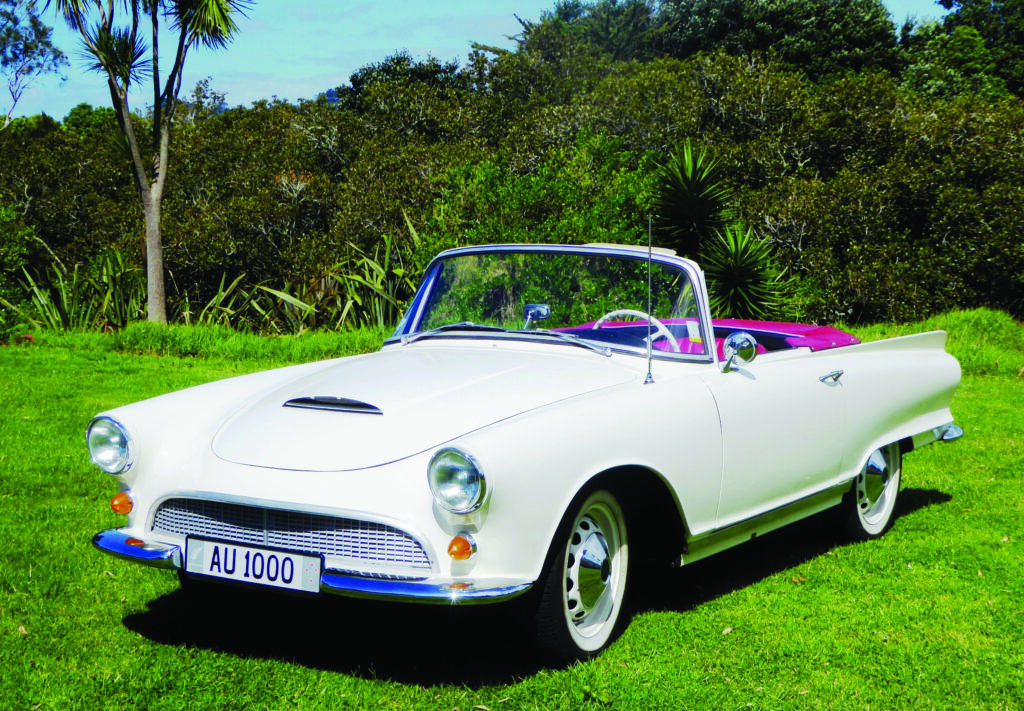
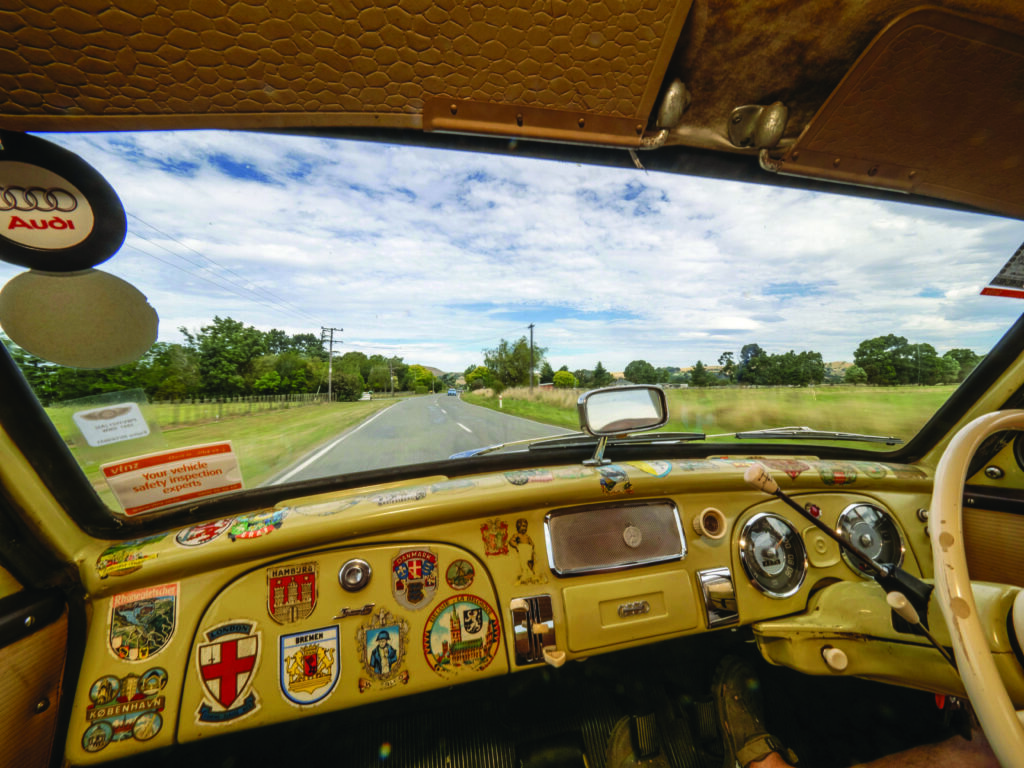
Tom’s travels
“I made contact with Tom in 2010,”says Brendan. “He had kept all the records of the car and photographs of their trip to Europe from the day he picked the [new] car up at the Auto Union factory in Dusseldorf, on Monday 6 May, 1957. At the time there was a two-year waiting list in South Africa for the cars.
“The story was related to me by 101-year-old Tom and his daughter, Dorothy, when I spoke to them at their home in Pretoria in November 2010.”
Ordered through South African car dealer Jacob Bos of Pretoria in 1955, retired army officer Tom Bower and his wife, Laura, and daughter sailed to Germany in May 1957 to collect their new car.
“They arrived at the Auto Union factory to pick up their car from what was the former Rheinmetall-Borsig armaments factory in the Second World War, at 8 o’clock on the Friday morning, with all their baggage.”
Oh, the disappointment! A new car was driven out to them, but it was green. Tom had ordered a yellow car. He produced the order documents to a flustered Herr Schultz from the Auto Union Export Office. They would have to wait until Monday as the appropriate colour batch for each day would not see a yellow ‘Sandgelb’ car off the production line until then.
Tom, a keen amateur photographer, took many photos, and created a detailed account of the journey. Stickers abound all over the dashboard thanks to Mrs Bower and remain as a colourful record of the Deek’s travels.
“Tom and his family had also met up with another South African family, the Van Wyks, who were also there to pick up their F93 and that car was also taken to South Africa. It was in Dusseldorf that Mrs Bower added the first sticker to the dashboard.”
The journey would take the car through Germany and Austria, where it received its first 1000-mile (1600km) service, then Italy and the Apennines near Castiglione, a place of particular interest to Tom, as this was the site of a battle and now the location of a war memorial and graves dedicated to fellow South African soldiers who fell there. The journey continued through to Monaco in time to see Fangio’s victory in the Grand Prix, then to Switzerland and the snow of the Brünig Pass, and into France to Paris. Next came the Channel crossing and a tour of Britain. At Southampton they boarded ship again,with their precious car, bound for Cape Town, South Africa. they had already clocked up 8948 miles (14,400km) on their European sojourn, finishing in mid-September 1957. Overseas travel was not yet finished for the Deek, as it was later transported to New Zealand.
A strong European club scene means a steady supply of information and parts backup, but for New Zealand, another source is now available thanks to Brendan’s efforts.
“I have a Brazilian friend up north who is in contact with parts suppliers in Brazil and can ship-in parts in containers,” he explains. “There is pretty much nothing we cannot get from Brazil, as they made these cars for a lot longer there and they have a big following.”
The journey continues as Brendan and family enjoy their New Zealand travels in their distinctive Deek.
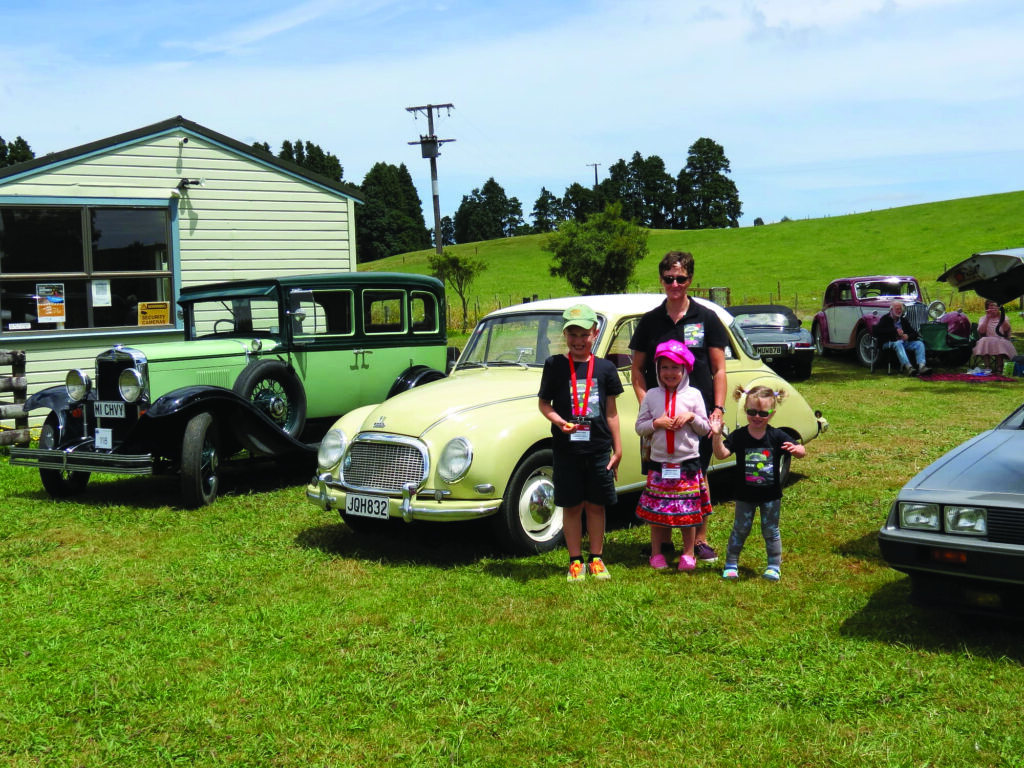
DKW/AUTO UNION ORIGINS (Das Kleine-Wunder — The Little Wonder)
A small group of German car manufacturers in Chemnitz, Saxony united to form Auto Union in 1936. Consisting of Audi, Horch, DKW, and Wanderer, the group became famous before the Second World War for its racing team based at the Horch works in Zwickau, Saxony. Under designer Ferdinand Porsche, the V12 and V16 mid-engine cars, along with the Mercedes-Benz Grand Prix team, would dominate pre-war motor racing and set speed records lasting years. Collectively, they would become the German ‘Silver Arrows’ racing legends, along with a select band of drivers.
Auto Union became synonymous with technical innovation, producing cars for the masses, such as its little aerodynamic, two-stroke DKW cars, and luxury models, like the V12-powered Horch limousines before war intervened.
Devastation from the war saw the company initially returning to its roots, making motorcycles and delivery vans as Germany struggled to get its industries resurrected. The remains of its Zwickau factory machinery was seized by the Soviets as war reparations and which went on to make Eastern bloc cars, Auto Union rose from the ashes in a new location in the Western-held sector of Ingolstadt, Bavaria in 1949, with production starting further west in Düsseldorf. In 1965, Mercedes-Benz, who had owned a majority shareholding in Auto Union since 1958, offered it to Volkswagen, who took over the company. In 1969, the group absorbed another historic German automotive manufacturer, NSU, known for its successful motorcycles and the Wankel rotary. DKW owes its origins to a Danish engineer, Jørgen Skafte Rasmussen, and his miniature two-stroke engines that were eventually upscaled for use in DKW motorcycles. Pre-war car designs were resurrected in 1949, again using two-stroke engines. A new three-cylinder two-stroke engine design was introduced in 1953, allied to aerodynamic styling. Swedish manufacturer Saab also used a version of the three-cylinder two-stroke design for its cars, along with a very similar aerodynamic body style to the DKW/Auto Union styling.
There was also a tie-up with British company Frazer-Nash, who used the engines in some designs. Brazil built DKW/Auto Union cars and models unique to region and it was always a strong market for the cars. Production continued long after the end of two-stroke production in Europe.
The crowning glory for Auto Union came in the form of the Müller-Andernach V6, an amalgamation of two three-cylinder engines on a common crankcase. Some engines were fitted in 1000 SPs and F102s, and examples are now hard to find. This little 1300cc screamer allegedly embarrassed a Mercedes-Benz sports car in a test session when the company was trying to decide on a suitable replacement four-stroke or two-stroke engine design. The four-stroke protagonists won the day and Volkswagen later made it the first Audi using an Auto Union body powered by the new four-stroke engine.
Known today as Audi-AG, the distinctive design of four interlocking rings, symbolising the original four members, is the familiar badge of Audi cars. The huge conglomerate now consists of Volkswagen, Audi, Porsche, MAN, SEAT, Lamborghini, and Ducati motorcycles, as well as other engineering companies. The former Zwickau plant is again part of Audi-AG.
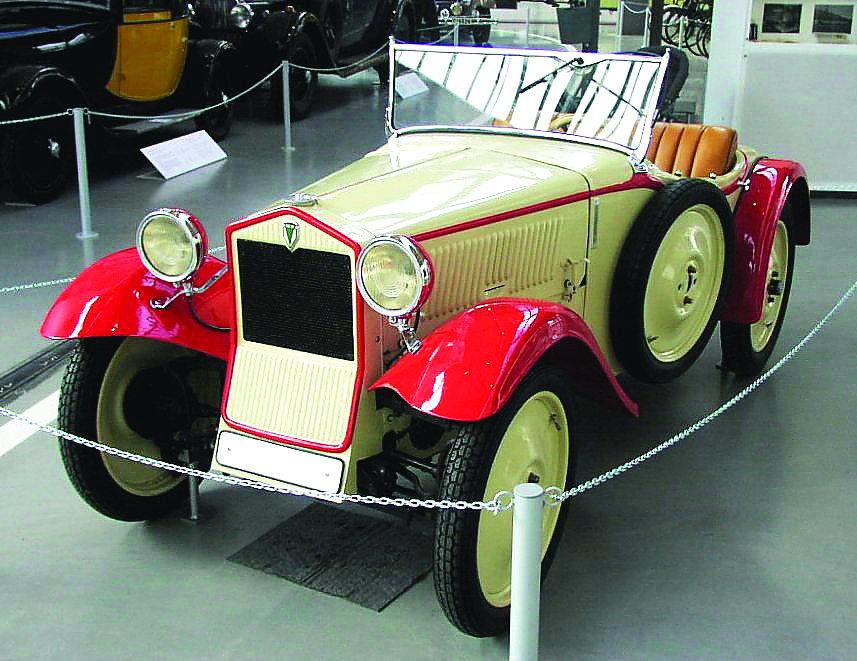
Future F1 Champion’s First Saloon Race
When young farmer Jim Clark wasn’t rallying the family Sunbeam, he joined his mate Ian Scott-Watson in their racing team, appropriately named Ecurie Agricola, driving Ian’s DKW Sonderklasse. Listed as Ian’s mechanic, he hoped to get around his parents’ disapproval of his motor racing activities. In 1956 at Criamond in Aberdeenshire, Jim drove his saloon car handicap race. He proved to be three seconds per lap quicker than Ian. The subterfuge somewhat backfired when, in his later race, officials penalised Ian, as they thought he had deliberately gone slower to improve his handicap for the later race.
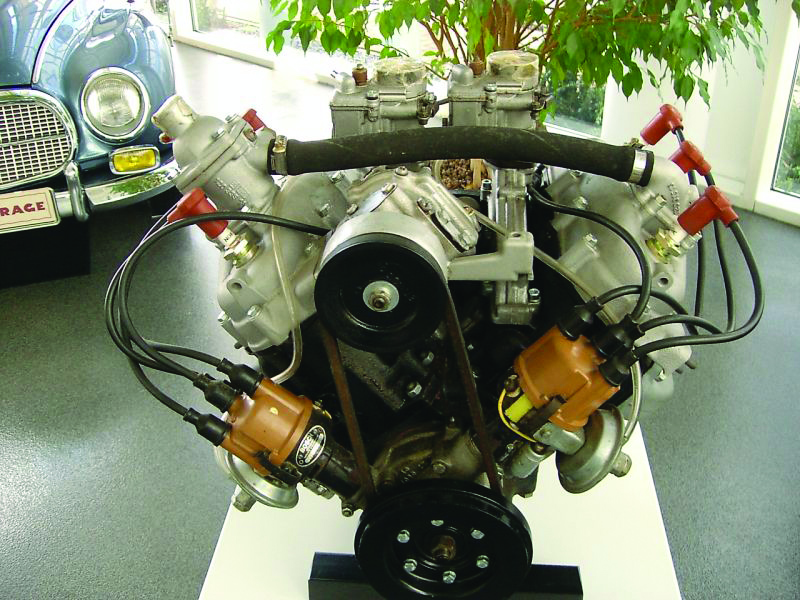
AUTO UNION DKW 900
Engine: In-line longitudinally mounted, water cooled
Capacity: 896cc
Compression ratio: 7.5:1
Ignition: 6-volt electrics. Ignition with triple contact breakers with mechanical advance
Fuel system: Single Solex carburettor, two-stroke with pre-mix oil-petrol fuel
Bore/stroke: 71mm/76mm
Power: 33.5kW @ 4250rpm
Torque: 71.1Nm @ 2800rpm
Transmission: Four-speed manual, synchromesh on second, third, and fourth gear. Column shift. Optional four-speed manual from 1953. Optional Saxomat automatic (centrifugal clutch) from 1957
Drive: Front-wheel drive with half shafts and Hooke joints
Weight: 1305kg
Length: 4200mm
Width: 1695mm
Max speed: 115kph
Years of production: Germany; DKW 3=6, 1953-1955, F93/94 18956-1959
